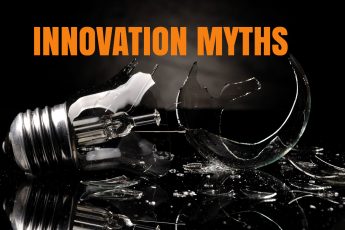
The Three Paths Every Small Business Should Take
Let’s start with the idea that there’s no one-size-fits-all approach to running a successful business. However, many small businesses face the same challenges, which puts them on one of two common paths. But there’s a third alternative path, too.
The problem for existing small businesses
Regardless of industry, most small businesses struggle to create sustainable growth strategies. I’m often stating that most small businesses are so busy working “in” their business that they often neglect working “on” their business. For example, a small business needs to work at selling products and services to their existing customers to make their business viable. For most small businesses struggling with resources, this might consume most of the team’s efforts—leaving them with limited resources to work on creating and executing growth strategies.
The advantage of startups and large companies
Startups and large companies can claim a distinct advantage over existing small companies. They have no customers, no products, and no business to work “in.” They only need to focus on working “on” the business and not “in” the business. (NOTE: This is often why most of the industry disruptive innovation is created by startups. Think Nest, Tesla, Uber, etc.)
Large businesses usually have the advantage of more resources that allow certain resources to work “in” the business and other resources to work “on” the business. Yet even with more available resources, most industry disrupting innovation does not come from large businesses either.
The two common paths of a viable business
First, let’s look at the two common paths most businesses take.
Path 1: Work “in” your existing business
First, as an existing company, you need to service your clients’ needs and solve their problems. Whether it’s by selling products, services or a combination of both, you must continue to deliver value to your existing customers. Failure to do so will result in losing customers—often to your competitors.
The second part of working “in” the business is to create value for new customers. This is where you’re actively marketing and selling to build your customer base with your existing products and services.
Path 2: Incremental innovation
On this path, you’re working “on” your business to improve your business. It’s about improving your products and services, so they continue to provide a solution for your customers. Perhaps it’s small improvements to your product or a new feature that provides new benefits for your customers. Your focus on continual improvement and customer-centric thinking drives these improvements.
But external forces, such as your competition or customers, can also drive these improvements. Perhaps your competitors just added a new feature to their product, which now makes your product less relevant in the marketplace. You’ll need to answer that call to action with improvements to your own product as well or face irrelevance in the market.
The additional path of market leading businesses
While the first two business paths are common, you might want to consider this third path.
Path 3: Disruptive innovation
On this path, you focus on creating totally new products/services that make your existing products—and your competitors’ products—irrelevant in the market, thus disrupting the entire market. Businesses on the forefront (think AirBnB, Uber, and Nest) notoriously take the disruptive innovation path.
The mindset behind this approach? You’re creating products to meet your customer’s future demand, which often customers don’t even know they have. Disruptive innovation—usually based on some new technology—becomes a game-changer for your customers.
Where to spend your time working “on” your business
Small businesses with limited resources might be tempted to simply skip Path 2 (incremental Innovation) and focus exclusively on Path 3 (disruptive innovation). This is a risky proposition. The problem? Disruptive innovation takes longer to bring to market. And, like any innovation, success is not guaranteed. A new great product or service that is poorly introduced and executed in the marketplace will surely fail. Keep in mind that a major miss in disruptive innovation while failing to work on incremental innovation could put your business in a situation in which it cannot recover.
So how should a company balance the work in all three paths with limited resources?
Honestly, it depends.
If your company’s product or service is clearly the market leader, perhaps you cheat a little by adding more resources to disruptive innovation. Or perhaps your company is last in your industry and you’re losing the battle of playing catchup to your competitors. Then, you might have no other option but to go all-in on disruptive innovation pursuits.
For the rest of the companies, a lot of it depends on your “boldness” balanced with being responsible. The key here is to work hard in Paths 1 and 2 so that you don’t fall behind, or at the very least don’t fall too far behind that you can’t recover.
Closing thoughts
Lastly, let me play Captain Obvious here. NEVER stop Path 2 (incremental innovation) if you don’t have a viable Path 3 (disruptive innovation). Many successful companies in many industries thrive in their markets focusing solely on Path 2. They focus on producing value-added, incremental innovation to their products and services at a pace faster than their competitors and thus enjoy a competitive advantage while others play catchup. The drawback? It’s not a sustainable, long-term strategy because they risk being disrupted by competitors.
I’m a believer that small businesses can successfully navigate all three paths if they can create and execute a strategy that works for their unique situation.
So, is your company following all three paths and if so, how does it balance normal business, incremental and disruptive innovation? Contact me at Kevin@DivergeAndSurge.com if you want to have a discussion about this balancing act.



